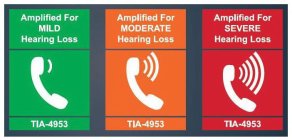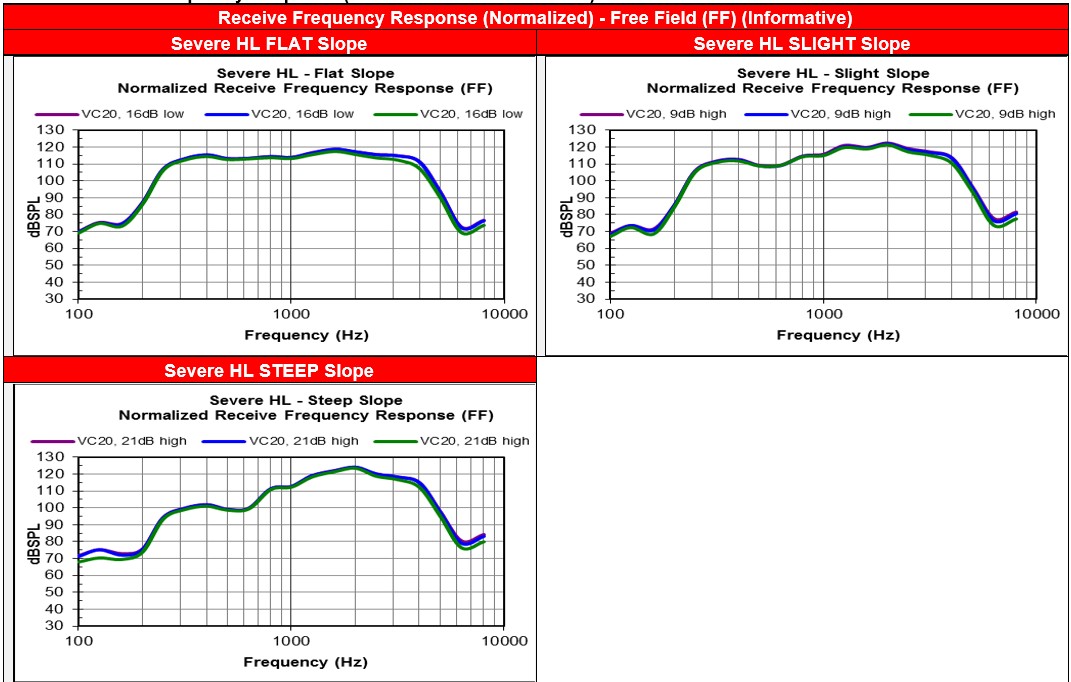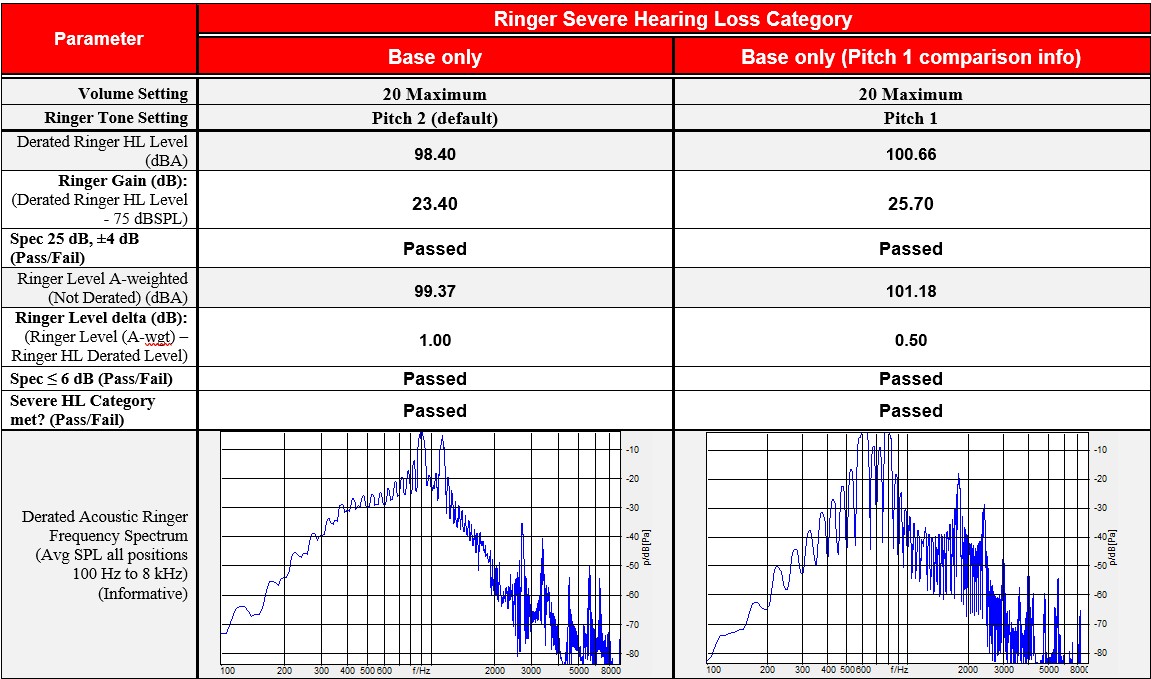Amplified Telephones (ANSI/TIA-4953) (high gain)

Amplified (high gain) telephone testing includes handset & speakerphone performance testing to measure sound amplification (volume control gain), tone control (frequency response), simulated use for hearing aid users will meeting noise and distortion requirements for the required amplified settings. Additional testing characterize the alerter (ringer) acoustic output amplification.
- The testing is applicable for narrowband and wideband audio, analog and digital (VoIP), Handset and Speakerphone devices.
- Telephone devices meeting TIA-4953 can apply for the license to use the logo for marketing from TIA.
- Other important testing to be covered in the standard is for the Acoustic Echo Control (AEC) and Double-talk performance.
Measuring the handset and speakerphone acoustic output characteristics involves determining the combinations of tone control settings for meeting high frequency emphasis (HFE) in concert with three levels of amplification settings related to hearing loss.
- Tone control HFE requirements for:
- Flat frequency response
- Slight rising frequency response
- Steep rising frequency response
- Amplification setting requirements for:
- Mild hearing loss
- Moderate hearing loss
- Severe hearing loss

Measuring the alerter (ringer) acoustic output characteristics involves determining the frequency spectrum in concert with three levels of amplification settings related to hearing loss:
- Amplification setting requirements for:
- Mild hearing loss
- Moderate hearing loss
- Severe hearing loss

Measuring the AEC and Attenuation characteristics is an important parameter as a poorly designed AEC can cause the far-end party to hear themselves during converstation. If send and/or receive path attenuation is used to control echo then proper switching is required to avoid conversational fustration for the near-end and far-end parties.
- AEC - Measuring the stability and characteristics of the AEC for all the combinations of tone control settings in concert with the amplification settings for single-talk and double-talk scenarios. (Also see ANSI/TIA-470.140)
- Voice attenuation - Measuring the attenuation characteristics during double-talk:
- If half duplex attenuation is utilized does the handset and/or speakerphone exhibit proper switching characteristics.
- If partial duplex how much are the send and or receive paths attenuated and the switching characteristics.
- If full duplex what is the AEC performance.